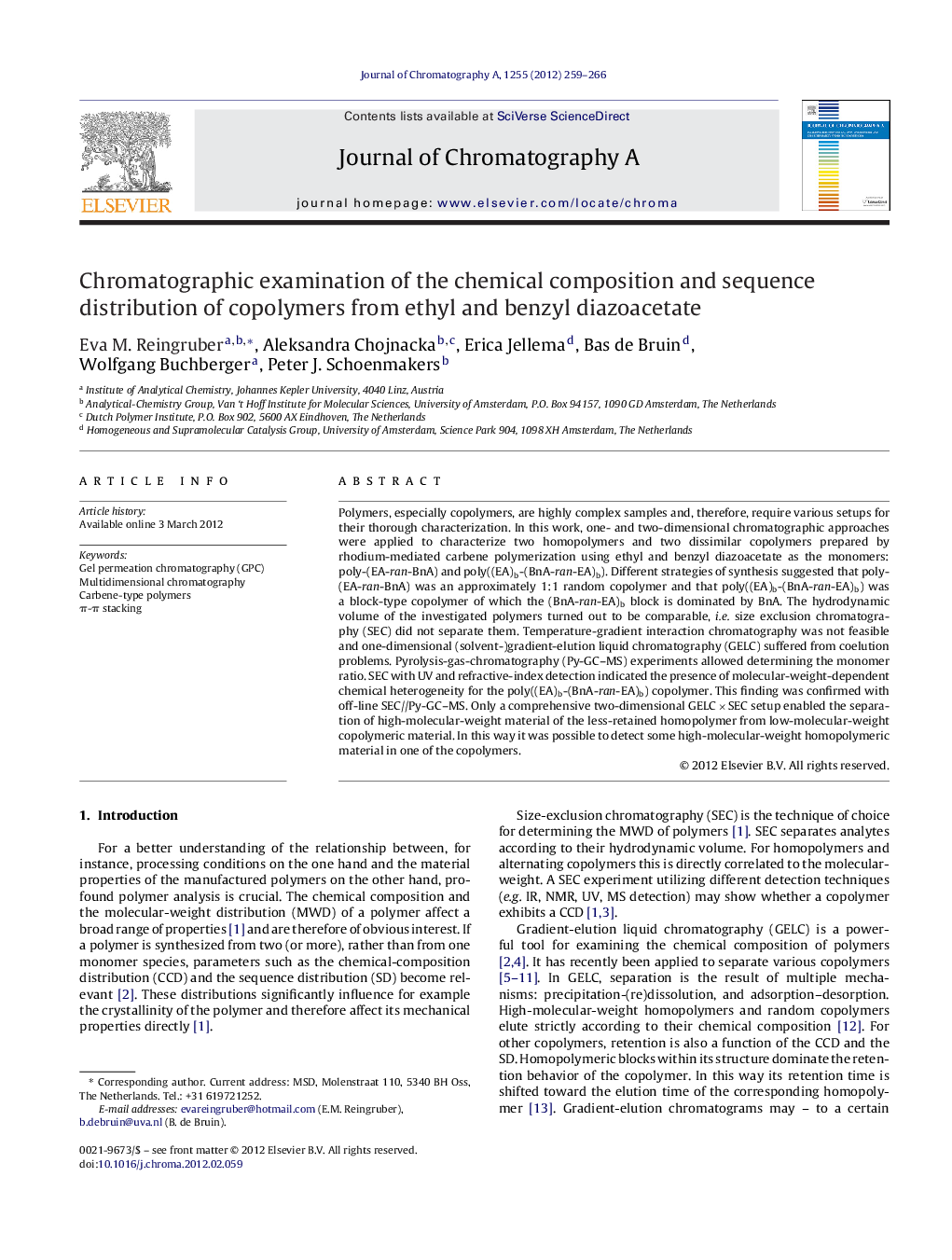| Article ID | Journal | Published Year | Pages | File Type |
|---|---|---|---|---|
| 1202138 | Journal of Chromatography A | 2012 | 8 Pages |
Polymers, especially copolymers, are highly complex samples and, therefore, require various setups for their thorough characterization. In this work, one- and two-dimensional chromatographic approaches were applied to characterize two homopolymers and two dissimilar copolymers prepared by rhodium-mediated carbene polymerization using ethyl and benzyl diazoacetate as the monomers: poly-(EA-ran-BnA) and poly((EA)b-(BnA-ran-EA)b). Different strategies of synthesis suggested that poly-(EA-ran-BnA) was an approximately 1:1 random copolymer and that poly((EA)b-(BnA-ran-EA)b) was a block-type copolymer of which the (BnA-ran-EA)b block is dominated by BnA. The hydrodynamic volume of the investigated polymers turned out to be comparable, i.e. size exclusion chromatography (SEC) did not separate them. Temperature-gradient interaction chromatography was not feasible and one-dimensional (solvent-)gradient-elution liquid chromatography (GELC) suffered from coelution problems. Pyrolysis-gas-chromatography (Py-GC–MS) experiments allowed determining the monomer ratio. SEC with UV and refractive-index detection indicated the presence of molecular-weight-dependent chemical heterogeneity for the poly((EA)b-(BnA-ran-EA)b) copolymer. This finding was confirmed with off-line SEC//Py-GC–MS. Only a comprehensive two-dimensional GELC × SEC setup enabled the separation of high-molecular-weight material of the less-retained homopolymer from low-molecular-weight copolymeric material. In this way it was possible to detect some high-molecular-weight homopolymeric material in one of the copolymers.
► We examined the polymers with gradient-elution LC and pyrolysis GC–MS. ► We examined with SEC-UV-RI and offline SEC//pyrolysis GC–MS. ► Gradient-elution LC and SEC were on-line coupled comprehensively. ► Comprehensively interfaced techniques are crucial for copolymer characterization. ► Ethyl diazoacetate was the more reactive monomer during polymerization.
